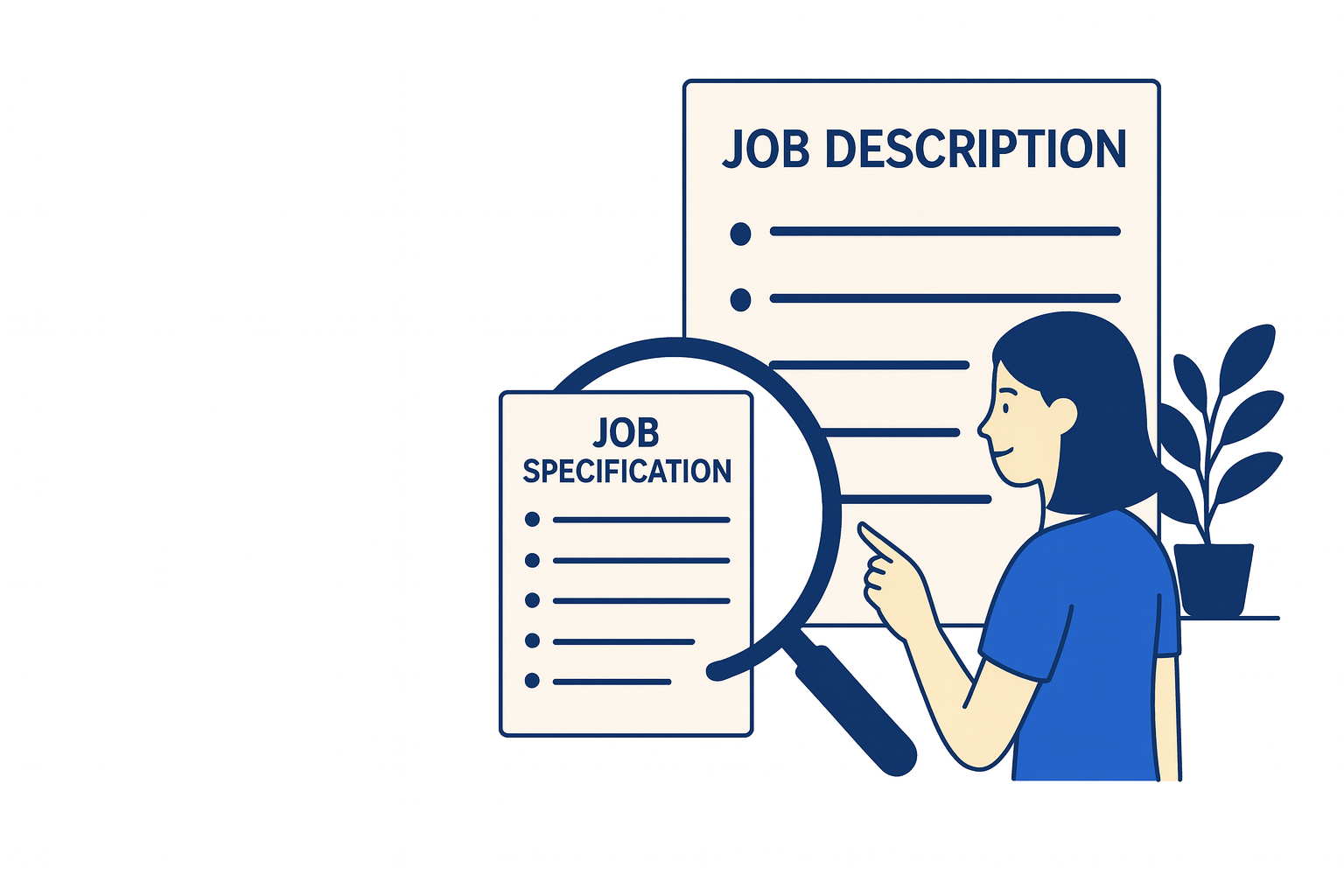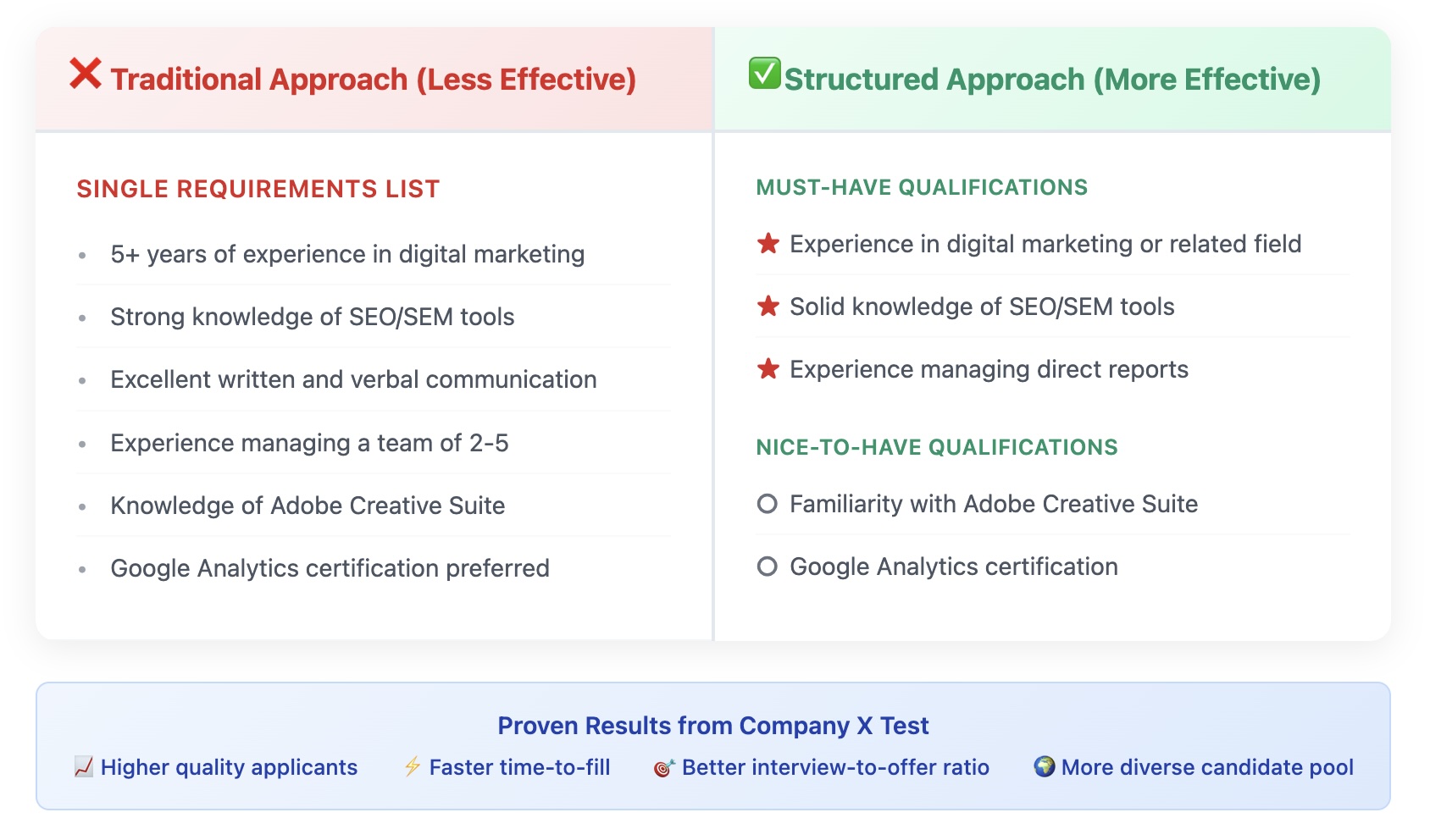I used to think a job specification and a job description were basically the same thing. A few buzzwords here, a few bullet points there, done. But then one of our clients told me about a hiring manager who handed them a “job spec” that looked more like a novel, and I realized I needed to dig into the real differences more.
Let’s clear it up. If you’re in recruiting, compensation, or any people-facing team, knowing the difference between a job specification and a job description isn’t just a vocabulary quiz. It can save time, help you attract the right candidates, and make hiring smoother.
Let’s Start with the Basics
A job description is technically an internal document. It defines the scope of a role, outlines responsibilities, and supports things like compensation and legal compliance. But—let’s be real—a lot of companies copy/paste this internal doc into their job postings. That’s where things get messy.
A job posting (or job ad) is what you should actually be using externally. It’s built to attract talent. It speaks to job seekers in plain language and includes the things candidates care about—like company culture, growth opportunities, and how the role fits into the bigger picture.
A job specification is different from both. It’s the behind-the-scenes checklist for what makes someone qualified: the required qualifications, skills, and sometimes even personality traits or physical demands.
Want a breakdown of how job descriptions compare to job postings and job ads, too? Check out our post on Job Descriptions vs Job Postings vs Job Ads.
Or if you prefer audio, I break it down in this podcast episode of The JD Fix:
Job Description = A Key Part of the Job Post
The job description is all about getting someone to apply. It usually includes:
It focuses on the work environment, growth potential, and what success looks like. It’s the hook. The trailer. The thing that makes a job seeker say, “Yes, this sounds like me.”
Job Specification = The Non-Negotiables
On the flip side, the job specification is about the ideal candidate. It gets into:
- Required qualifications (e.g., bachelor’s degree, certifications)
- Specific skills (technical and soft skills)
- Experience levels
- Personality traits or behavioral expectations
- Physical demands or working conditions (when relevant)
It’s used in the recruitment process to align team members and streamline the selection process. It helps you narrow the field to qualified candidates.
Why You Need Both
If you only use a job description, you risk being too vague. If you only use a job specification, you risk sounding robotic (and scaring off great people).
Using a mix of both helps HR professionals, recruiters, and hiring managers set clear expectations and attract the right talent. Plus, it’s a key part of the hiring process that supports performance management later down the line.
Real-Life Example
One of our clients at Ongig shared how job specs helped fix a an issue in the interview process where candidates were confused by details that weren’t clearly outlined from the start. And, their engineering managers kept ghosting recruiters during intake calls. Why? Because the job descriptions didn’t align with what the managers were actually looking for.
We helped them break it down into a clear job specification, just the must-haves. Then we added a section for this in their global template to help them apply the new section across roles, fast. Suddenly, those meetings were cut in half. Recruiters were sending better candidates. Hires happened faster. All because we took the time to define the specific role and job requirements up front.
The best rule to think about when writing external job postings, descriptions, job ads (whatever you call them) is to be clear, before being clever. People want to know what their are in for.
Job Spec Tips (So You Don’t Make it 12 Pages)
- Start with a job analysis — talk to someone who’s done the role or manages it
- Keep it concise — if you need 1 to 2 pages, understand everything might not go in the job post
- Use bullet points for skills and qualifications
- Include necessary knowledge, not everything under the sun
- Tailor it to the specific job, not a department
TL;DR – The Key Differences
| Job Description/Posting | Job Specification | |
|---|---|---|
| Purpose | Attract candidates | Define qualifications |
| Audience | Job seekers | Hiring teams |
| Focus | Responsibilities, company culture | Skills, experience, personality traits |
| Style | Conversational, persuasive | Structured, specific |
Why I Wrote This
At Ongig, we talk to TA teams every week who are struggling to define roles clearly. They’re stuck editing Frankenstein job descriptions or ghost-hunting hiring managers. Having a solid job specification solves that.
Request a demo and we’ll show you how Ongig helps you turn messy inputs into clear, consitent, and effective job descriptions, backed by the right specs.
FAQs
What is a job specification?
A job specification lists the skills, qualifications, and traits a person needs to succeed in a role. It’s for internal use.
How is a job description different from a job specification?
A job description is used in job postings and focuses on selling the role. A job specification defines what makes a candidate qualified.
Can I use a job specification in a job ad?
Parts of it, sure. But don’t just copy and paste, job specs are often too dry for candidates.
Who writes the job specification?
Usually, HR or the hiring manager creates it, often during the intake meeting before recruiting starts.
How long should a job specification be?
1 to 2 pages max. Keep it specific and relevant to the role.











